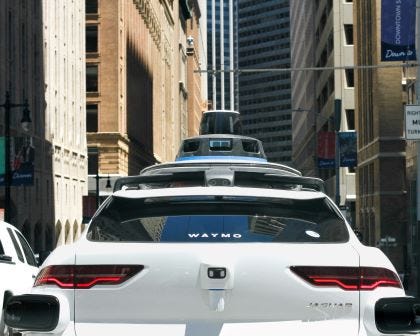Every edition will feature 7 stories, from the past week. I’ll draw on my background in media, journalism, agriculture, biotech, and renewable energy to come up with an interesting selection and do my best to offer some context.
Sometimes built around a theme, sometimes random, but with a Canadian twist.
The Luddites are a misunderstood group from the early 1800s. Misunderstood because today the term is generally used to derisively to refer to someone opposed to technological advances. The real Luddites that caused disruption among industry companies in Britain did not oppose the tools of the industrial revolution. They were concerned that the benefits from the spread of new labour-saving machinery were not being passed on to workers. Companies became more profitable, many skilled workers lost their jobs, those who remained did see any rise in their wages or an improvement in working conditions, and government was doing nothing to protect the labour force in this new machine-driven economy. In short, the benefits of automation were not being felt equally. Sound familiar?
So when I saw this TechCrunch article about a Waymo robotaxi set on fire in San Francisco I couldn’t help but wonder if we are seeing the re-emergence of 200 year-old concerns. Waymo is the only licensed driverless taxi service in the city so is the poster child for autonomous driverless technology and for inherent concerns about its safety. The only other company, Cruise, had its license suspended after a pedestrian was hit and dragged by a robotaxi. It was only after the accident that Cruise created the position of Chief Safety Officer within the company. Not exactly inspiring for potential naysayers who already have an image of things that could go wrong or who find the experience of riding in a Waymo pretty strange – even if it is in a Jaguar. And like the Luddites of old, in Canada we are faced with a patchwork of rules and regulations that leaves passengers in driverless cars and the owners of these services unsure of who is looking out for their safety.
Which leads us inevitably into Artificial Intelligence. Apart from AI being a key piece of driverless car technology, it is already changing our lives for better and for worse and it is doing it unevenly around the world. On this one I will lean in the direction of being called a 21st century Luddite because AI fears may well be the same that were at the heart of what Luddites in 1811 were fighting. Namely that new technology is not necessarily good technology, that is should be controllable, and that it should benefit everyone – not just top managers, owners, and shareholders.
So when Jensen Huang, the CEO of Nvidia said this week that “fears about the dangers of AI are overblown” I could not let the story go unnoticed. In the Reuters story he also said that new technologies such as cars and aviation have been successfully regulated.
Bah Mr. Huang!
First point to consider is that his company stands to benefit from AI technology. A lot. Secondly, while cars and aviation have been well regulated, Henry Ford and William Boeing were not heralded as the ones we should be turning to for advice on fair and equitable regulations. Nor were the regulations created after the first transatlantic flights. While Huang’s desire to have “sovereign AI” where countries integrate their own culture and languages is a loft ideal, he seems to have skipped by a basic reality. A new paper from the Center for Technology Innovation at Brookings notes that roughly 4.2 billion people live outside the digital revolution – that’s more than half of the world’s population. Most of the stories about Nvidia’s brave new world fail to mention that the company’s revenues are up 200% year-on-year, largely because of its role in the exponential growth of AI. And unlike his comparison of cars and planes, AI can skip borders with a single click. When the first traffic lights were installed in Canada in 1925 it was a big deal to drive across the province, let alone across the country and commercial transatlantic flight were more than a decade away so I would suggest his analogy is meaningless. Before we let corporate founders and CEOs drive new technology, we should suggest they consider some cautionary tales from history and then spend a few weeks living in the company of the people who do the work. They could well be the new Luddites fighting for rights and livelihoods.
Those early Luddites were craftspeople and workers in skilled trades. As the Industrial Revolution marched on there was less value placed on those workers and as we headed into the 21st century the buzz in business, education, and media was focused on entrepreneurs and tech know-how. Now the latest Statistics Canadas data points to skilled trades making a strong comeback. This month, the job search site Indeed pointed to 20 trade jobs in demand across a varied range that included electricians, pipefitters, carpenters, mechanics, and bus drivers. Experience and training needed, but not a University degree in sight. The economies in Alberta and Saskatchewan are creating demand for these jobs and just this week the Province of Nova Scotia announced it was funding more seats in high-demand trade jobs and waiving some certification fees for trade professionals. As someone who is not a great do-it-your-self-er, I appreciate every sliver of experience and knowledge tradespeople bring into my home.
I love my morning coffee and I am not alone. A survey of Angus Reid Forum members yielded a headline in the Toronto Sun that “Canadians won't give up their morning coffee”. The survey was on behalf of a supplement company, so it is probably no surprise that participants also felt that coffee makes them better thinkers and wish their coffee had more nutrients in it. But possible survey bias aside, Canadians do knock back 2.7 cups of coffee a day and roughly 80% of us have our coffee in the morning. We have seen the price of our wake-up juice inch up over the last couple of years and we have to face other threats to coffee production beyond the price. Don’t despair quite yet as researchers are working to ensure that coffee bean varieties are better able to withstand the vagaries of climate change and are more resistant to disease. The complete Coffea Arabica Bourbon genome has been sequenced which will help breeders develop more resilient varieties. So, pour a cup of your favourite caffeine and let the Java do its thing to start your day.
Coffee production is fragile, but a recent “last supper” hosted by a former White House chef added a few more to the list of crops that are under threat. The menu included salmon, oysters, lamb, potatoes, and sticky toffee pudding which the organizers said are all affected by what’s going on around the world. A CBC Radio interview brought the menu into the studio with its own sampling of endangered foods.
One factor pushing our food security in the wrong direction is that we are losing the land we need to feed ourselves. “Land degradation” as this article from BNN Bloomberg emphasizes, is affecting almost every country in the world. UN Secretary-General António Guterres addressed the loss of productive land and food insecurity this week by pointing out that more than “330 million people were affected by acute food insecurity in 2023”.
The McRib sandwich at McDonald’s is a quirky bit of Canadian culture. After being absent from the fast-food chain’s menu for a decade it re-surfaced on January 30th after its popularity was growing across social media. (or at least that’s what McDonald’s says). Let’s face it, this is not a culinary masterpiece, it isn’t cheap, and it is fast food. Pork re-shaped to look like a tiny rack of ribs and smothered in barbeque sauce, onions, and pickles. For $7.00 you’ll get 500 calories, 27 grams of fat, and a whopping 750 milligrams of sodium. Nevertheless, good marketing by McDonald’s because as of this writing, “McRib” was peaking on Google Trends just after 1:00a on Valentine’s Day and was most popular in the Yukon followed by Manitoba. And that is where one of this week’s story peaks as well. Listen to this CBC Radio interview with Ryan Zacharias in Winnipeg. He has had a McRib every day since it was re-introduced in Canada and doesn’t seem to be suffering to much from the experience.
For some, the McRib dare not be spoken of as real meat. However, when it comes to imitation meat or proteins there are alternatives – some seemingly pulled from the pages of science fiction. It is already a common sight to see plant-based meat replacements in most grocery stores. What’s next is meat or protein replacements grown in bioreactors. Usually referred to as cell-based or cultured meat, this is meat which uses cells from animals then chemically mimicking the biological processes to build muscle and fat. It has been promoted as a process with the potential to reduce the environmental footprint of meat production and reducing the slaughter of livestock. The basic process is relatively simple. The problem is ramping it up to make it commercially viable. And therein lies the problem. Listen to this interview on The Current (fast forward to the 22-minute mark) to get a good overview of the problems. There may well be a middle ground in dealing with the problems as outlined in a paper published this week in the journal Cell. Muscle and fat cells are grown in the lab but are integrated with rice. BBC refers to it as “meaty rice” with a protein kick. The same technology can be used to create other animal-free food products in the lab such as lab-grown milk. Remilk is an Israel company and it has received the okay to sell its lab-grown milk protein to food and dairy companies in Canada. No matter where food processing technology leads us, a global population of 10 billion people by 2050 will need 50% more food. May that be a sobering thought for us all as we stand in line for a McRib.
Read, comment, subscribe, and share this newsletter.
I’m available for contract and freelance work with not-for-profits and charities. With 40 years of experience behind me and lots of time ahead of me, I’m here to help you make a difference in your media relations, public relations, and general communications needs.



